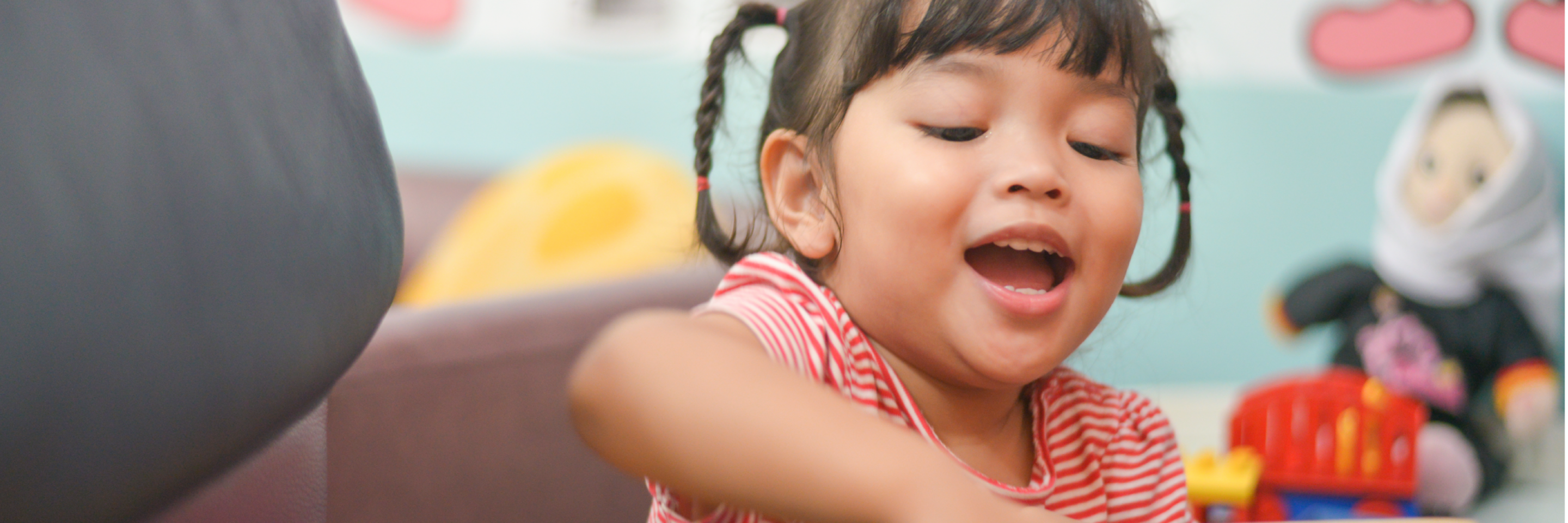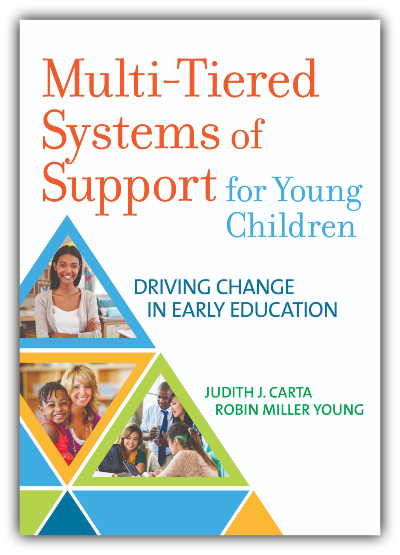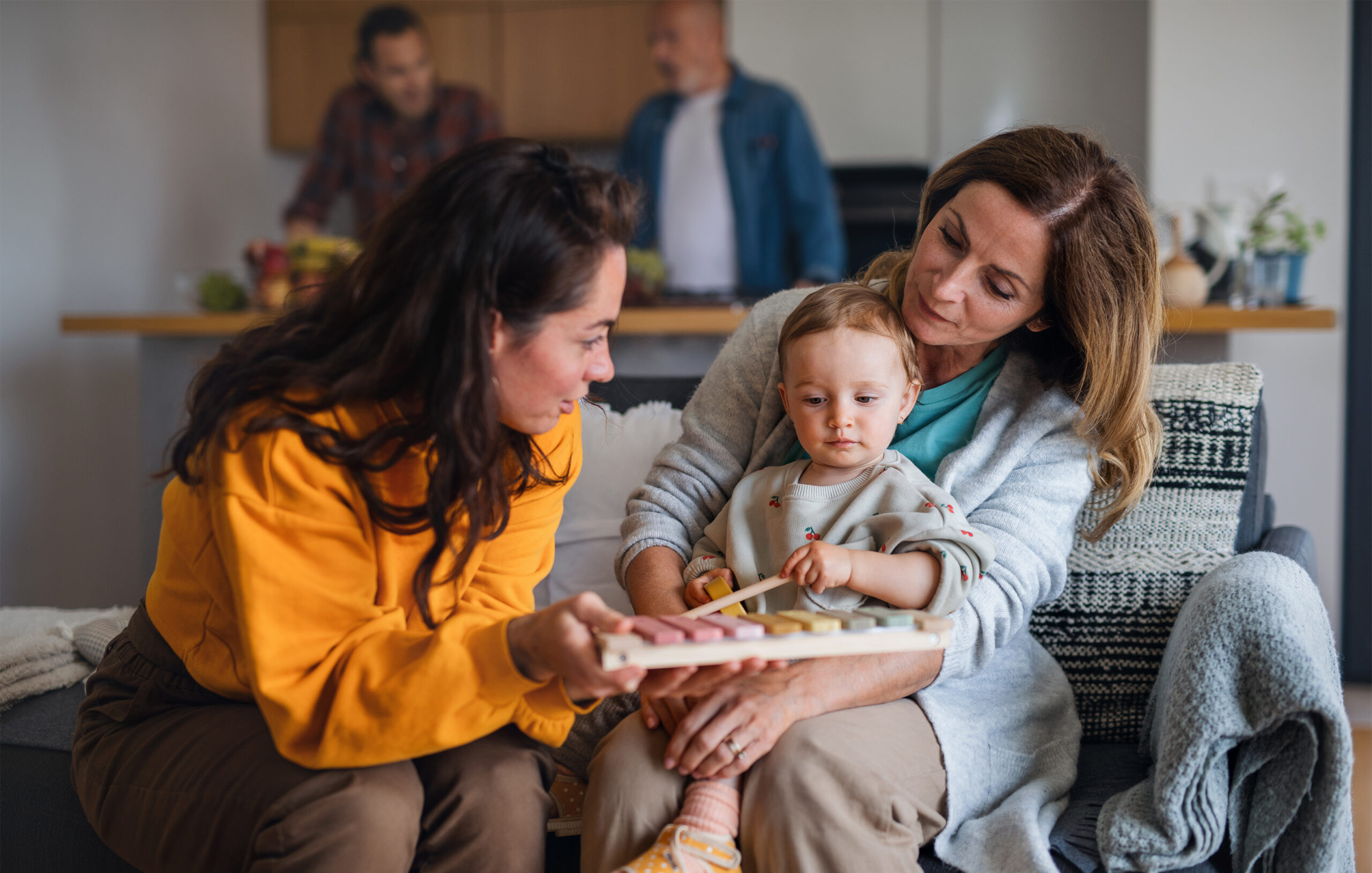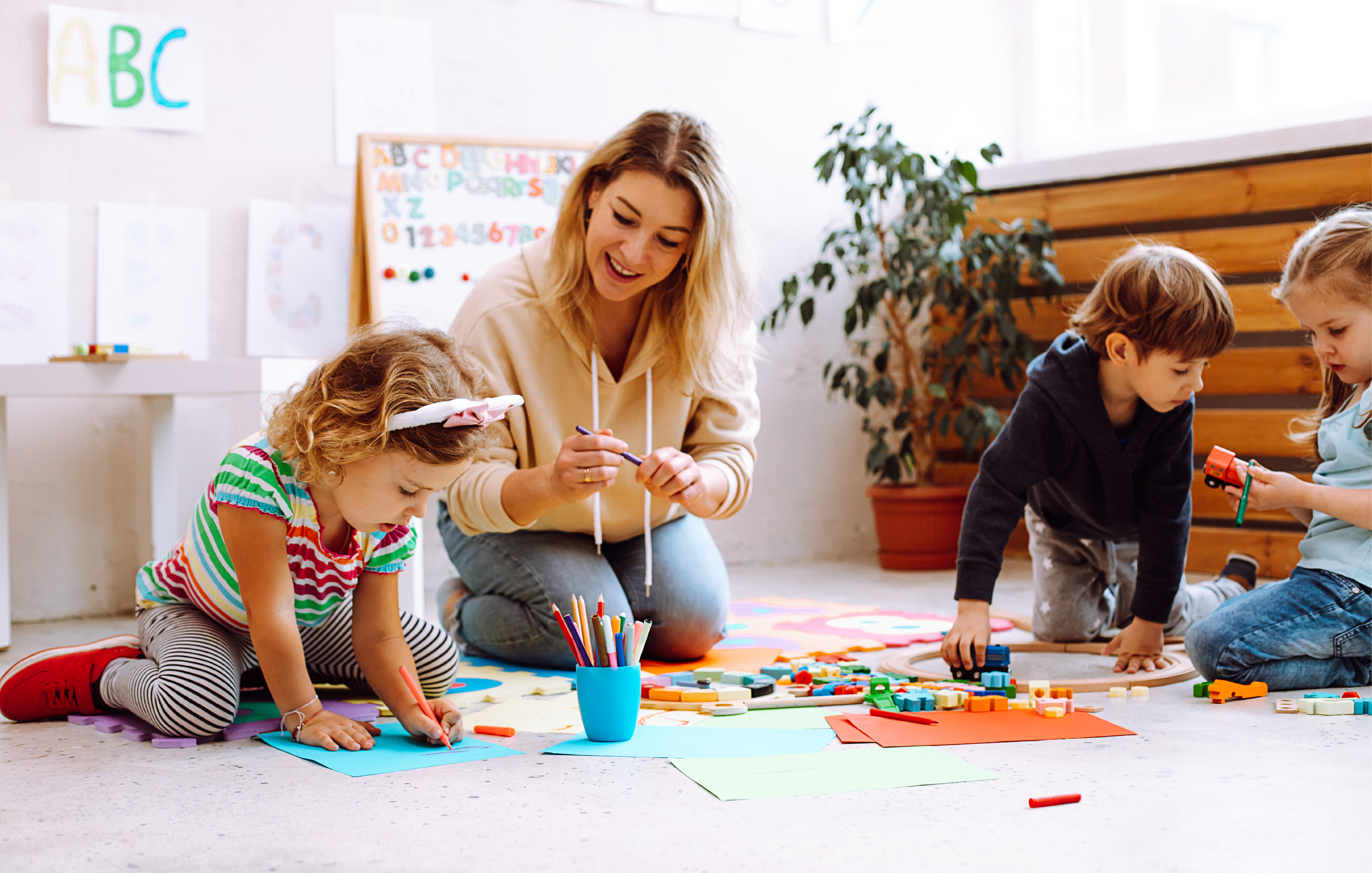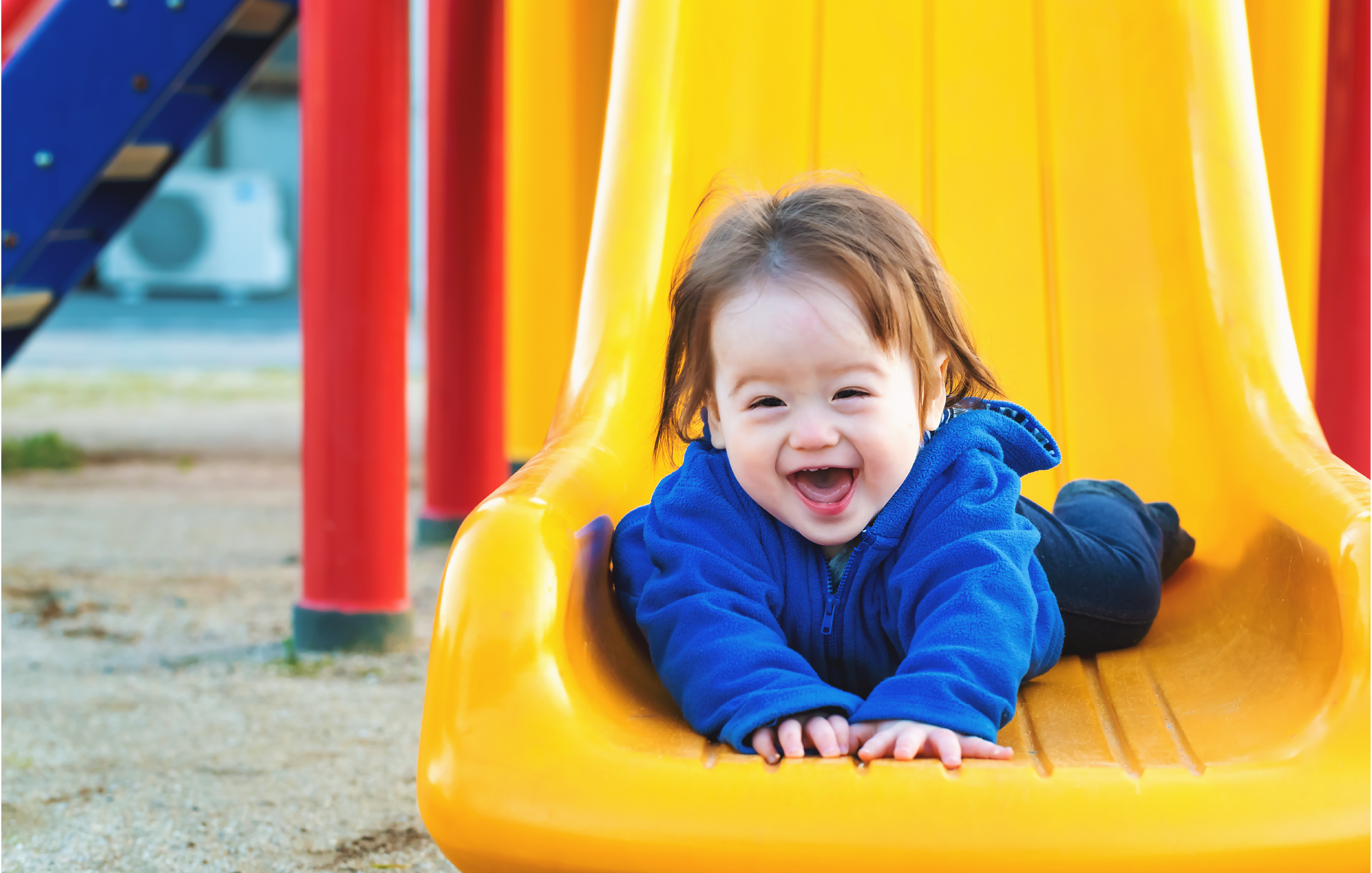How the AEPS-3 Curriculum Aligns with MTSS
PublishedThe AEPS-3 Curriculum’s conceptual framework is based on several effective methodologies currently in use: multi-tiered systems of support (MTSS), blended practices, and activity-based intervention (ABI). Today we’ll take a closer look at how AEPS-3 aligns with the popular MTSS approach that’s used widely in public schools.
In their book Multi-Tiered Systems of Support for Young Children, Judith J. Carta and Robin Miller Young provide this description of MTSS:
Multi-tiered systems of support (MTSS) offer programs and a framework of evidence-based practices to ensure that children receive the support they need without having to demonstrate failure first. MTSS offers a new paradigm that shifts the ways programs respond to students—a shift from trying to fit students into specific programs and services to a new approach focused on designing services and support around the needs of the individual student. In this way, programs employing MTSS have a quicker way of identifying students showing the first signs of delay and addressing these delays with individualized supports, therefore preventing problems and improving the likelihood that students will be ready to succeed in kindergarten.
One core component of MTSS is the inclusion of multiple levels or tiers of instructional support to meet the individual needs of all learners. The AEPS-3 Curriculum reflects this approach—it’s divided into three universally recognized skill levels, with tiered teaching suggestions fully integrated into regularly occurring early childhood routines and activities. Each routine and activity in the AEPS-3 Curriculum presents suggestions for teaching strategies at three differing tiers of support: the universal, focused, and specialized tiers.
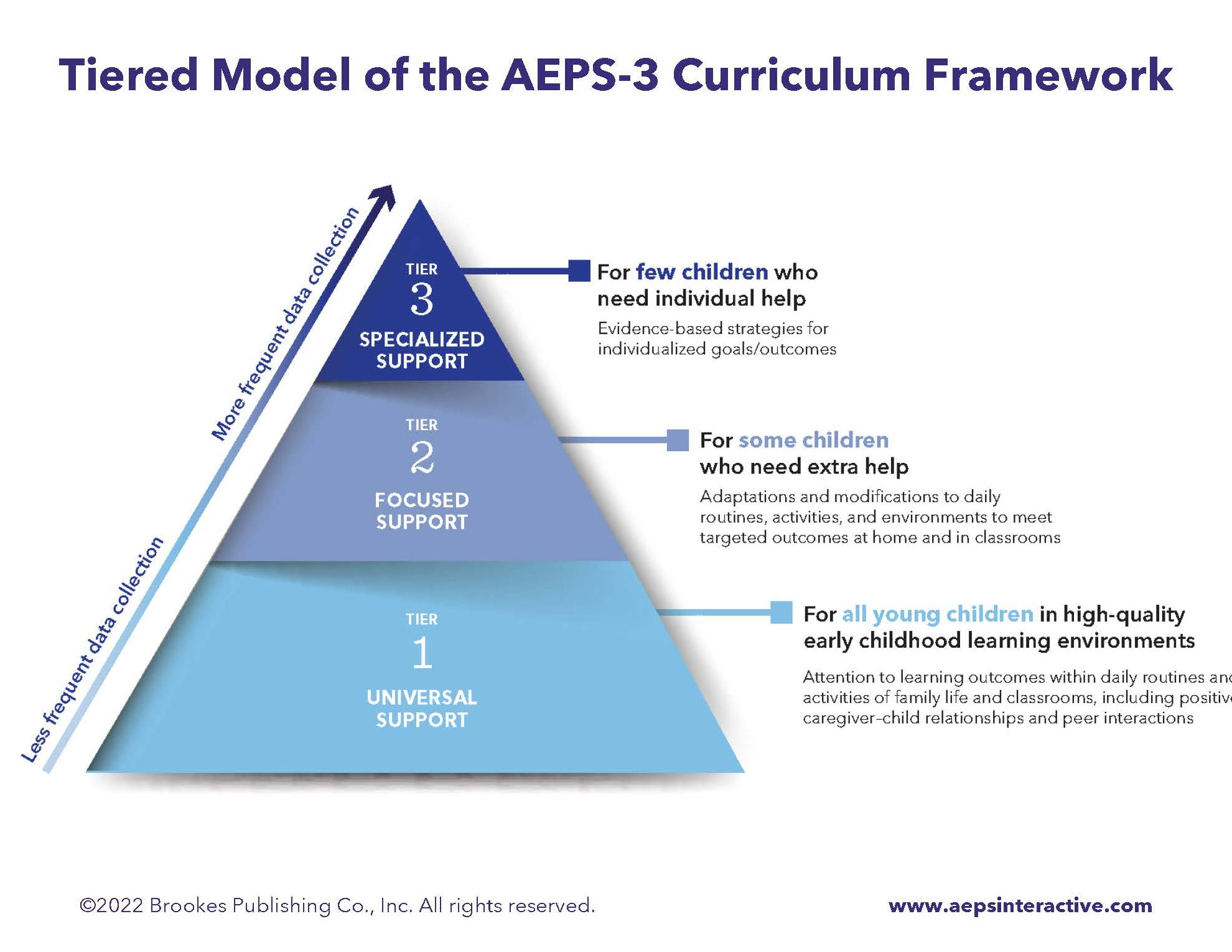
- Tier 1: Universal—The first tier focuses on universal teaching and parenting strategies that are appropriate for all children of a particular developmental age. AEPS-3 Curriculum routines and activities capitalize on children’s active participation in home, school, and community life. The recommended teaching strategies are routines-based, activity-based, and designed to be best practice approaches that are effective for children with and without disabilities. These universal strategies may not work well for every child, though, and some children may need alternatives that require more input and structure to learn specific skills.
- Tier 2: Focused—For children who don’t make adequate or expected progress with the universal content and strategies in the AEPS-3 Curriculum, the second tier recommends the use of more focused teaching strategies to provide additional learning support. The strategies within Tier 2 build on the routines and activities of the universal tier and involve relatively minor modifications and adaptations for some children who need extra help to ensure more frequent and focused learning opportunities. The teaching content may target more discrete skills (using single words rather than phrases) or information (learning two colors rather than five). The focused strategies of Tier 2 are meant to supplement, rather than replace, universal strategies.
- Tier 3: Specialized—Tier 3’s specialized support strategies are for the few children who need more structured, individualized content and methods to address their unique learning goals, such as those found on IFSPs and IEPs. In this tier, children receive specially designed instruction to address disability-related or pervasive learning problems in the context of ongoing routines and activities at home and/or in classrooms. The more intensive strategies at the specialized tier build on, rather than replace, universal and focused levels of teaching. These strategies are designed to help children acquire prerequisite and foundational skills more quickly, thus increasing their participation in high-priority routines and activities.
The tiered approach to teaching and intervention in AEPS-3 is consistent with the MTSS methodology that helps children achieve essential developmental and early academic learning outcomes. By differentiating levels of support for young children with diverse needs, the AEPS-3 Curriculum ensures that all children get what they need to make progress toward critical skills—and prepare for success in kindergarten.
LEARN MORE ABOUT MTSS: The book Multi-Tiered Systems of Support for Young Children—a planning guide supplemented with helpful videos—is highly recommended for early childhood leaders at all system levels.
LEARN MORE ABOUT THE AEPS-3 CURRICULUM: See this Curriculum page for helpful visuals, a curriculum excerpt, and a webinar.
This post has been adapted from information in the AEPS®-3 User’s Guide (Volume 1) and AEPS®-3 Volume 3: Curriculum—Beginning: Diane Bricker, Ph.D., Carmen Dionne, Ph.D., Jennifer Grisham, Ed.D., JoAnn (JJ) Johnson, Ph.D., Marisa Macy, Ph.D., Kristine Slentz, Ph.D., and Misti Waddell, M.S.
